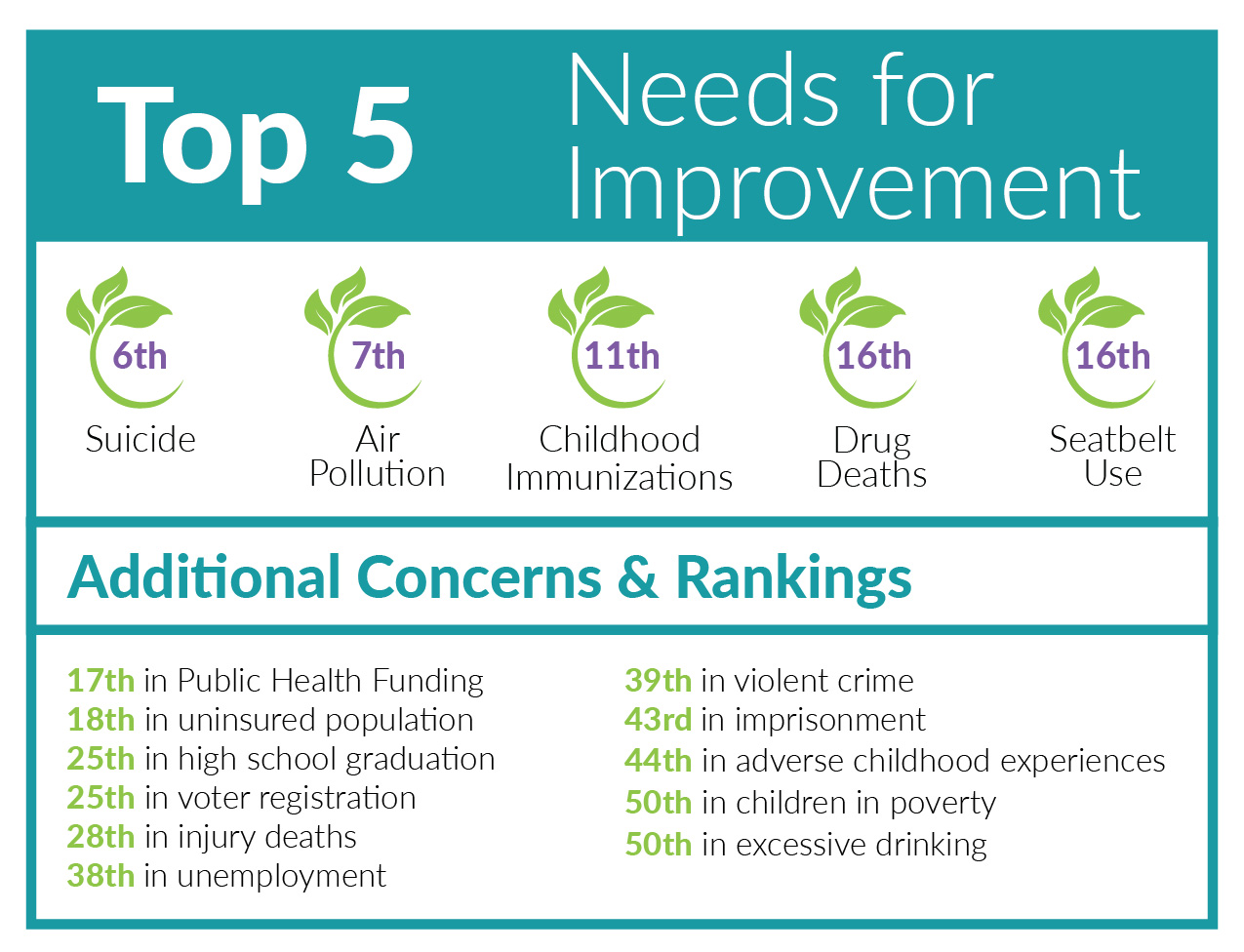About
For the past 35 years, the Violence and Injury Prevention Program (VIPP) at the Utah Department of Health and Human Services (DHHS) has endeavored to prevent and minimize the harm caused by injuries and violence. We have learned a lot over these years and have valued our collaboration with you, our partners.
Since the beginning of 2018, VIPP staff and members of the Utah Injury Community Implementation Board (ICIB) have been engaged in a strategic planning process using a shared risk and protective factor framework. This is a dramatic change from how we have framed our strategies in the past, made more difficult in that only a small handful of other states had engaged in this advanced type of strategic planning before us.
Our goals

The Violence and Injury Prevention Program has an overarching goal to understand why violence and injuries occur, their consequences, and the most effective ways to prevent violence and injuries from happening in the first place. To do this, we use data and other research to systematically collect information about the magnitude, scope, characteristics and consequences of violence and injuries.
Operations goals
- Build program capacity to include a learning culture for staff to advance health equity and a trauma-informed approach across Utah’s population.
Prevention and program goals
- Provide awareness, support, education, training, and technical assistance on injury and violence prevention, shared risk and protective factors of injury and violence, harm reduction methodology, and on populations disproportionately affected by injury and violence, to partners and grantees.
- Intervene to lessen risks and the harmful outcomes of injury and violence and to reduce their occurrence among Utahns.
Shared risk and protective factors goals
- Improve the socioeconomic conditions for Utahns, disproportionately affected by
poverty through implementation of evidence-based strategies. - Promote individual, family, and community connectedness to decrease isolation and loneliness among Utahns.
- Encourage social norms shown to promote safety and health among Utahns.
- Encourage enhancement of Utahns physical environment to improve safe and healthy living.
- Improve access to and utilization of healthcare, including behavioral healthcare.
Data and evaluation goals
- Collect and disseminate accurate, timely, and comprehensive data on injury and violence, on the risk factors for injury and violence, and on the populations that are disproportionately affected by violence and injury in Utah.
- Conduct evaluation of VIPP’s prevention and surveillance activities to inform data-driven decision-making and continuous quality programmatic improvement.
The (VIPP) uses data from multiple sources to identify higher risk populations for various poor health, behavioral, violence, and injury outcomes. Some of these sources include the BRFSS, YRBS, SHARP, and morbidity and mortality data. Additionally, VIPP uses current literature or data (national or state) to identify possible target populations for specific topic areas.
VIPP aims to develop strategies for all topic areas by structuring our strategic thinking and action around risk and protective factors that are associated with problem outcomes of interest. VIPP uses current best practices, literature, and other CDC and national resources to improve strategic planning and to develop shared risk and protective factors. The program has been especially focused on building capacity for work centered around shared risk and protective factors and has developed a strategic framework for VIPP work that uses 5 overarching factors that encompass our program areas and contribute to health outcomes. These overarching factors include:
- Laws and Policies– Promote laws and policies that support safe communities
- Cultural– Encourage social norms that promote safety and health
- Health Access– Improve access and utilization to physical and behavioral health care
- Physical Environment– Enhance the physical environment to improve safe and healthy living
- Economic Development– Improve the socioeconomic conditions for Utahns
- Connectedness– Promote individual, family, and community connectedness
Awards and Recognitions
- 2017 Innovative Initiative Award from the Safe States Alliance
- 2012 Kind Remembrance Award from the Caring Connections grief program for the teen memorial booklets
- 2012 Innovative Initiative Award from the Safe States Alliance
- 2012 Innovations in Health Education Award for the 2010 All They Left Were Memories: Stories of teen lives lost on Utah's roads memoriam. Presented by the Health Education Association of Utah
- “Excellence in Collecting the Most Timely and Complete Violent Death Data” for 2007, 2008, 2009, and 2010 presented to the Utah Violent Death Reporting System by the CDC